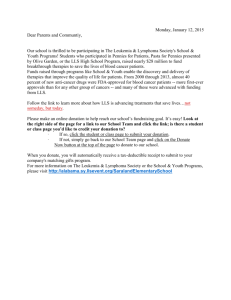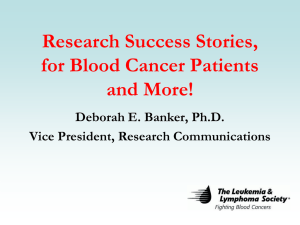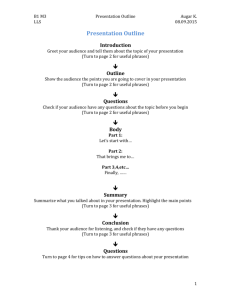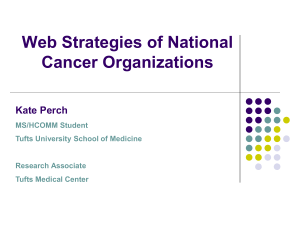Manning Great Lakes District Land Management Grants Program
advertisement
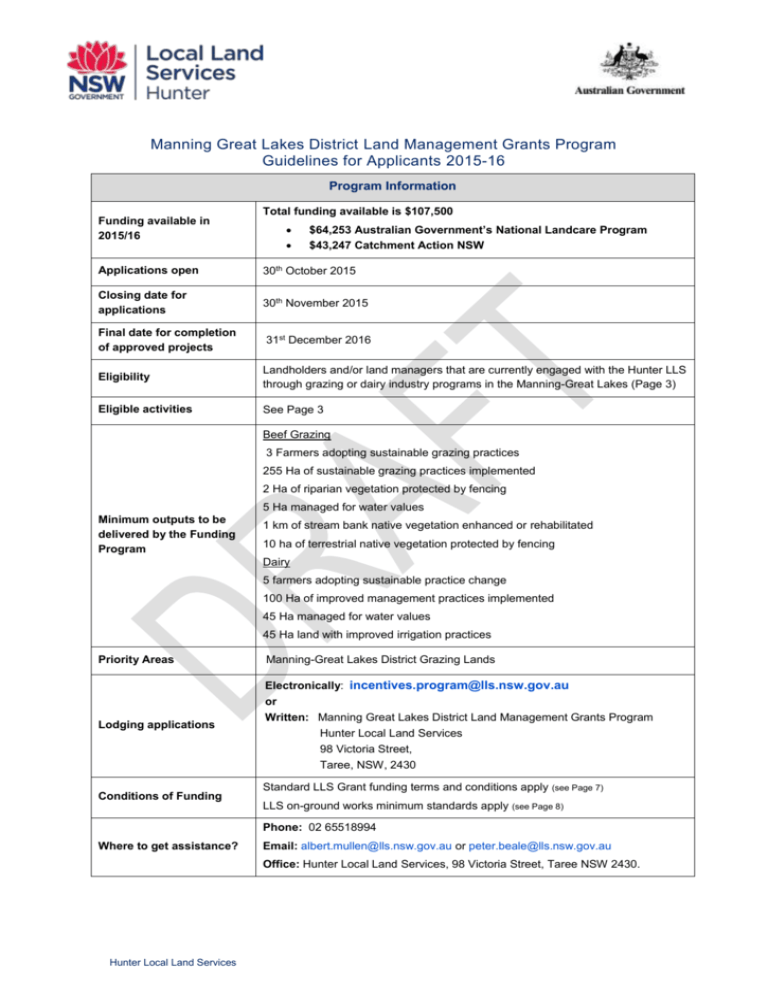
Manning Great Lakes District Land Management Grants Program Guidelines for Applicants 2015-16 Program Information Funding available in 2015/16 Total funding available is $107,500 $64,253 Australian Government’s National Landcare Program $43,247 Catchment Action NSW Applications open 30th October 2015 Closing date for applications 30th November 2015 Final date for completion of approved projects 31st December 2016 Eligibility Landholders and/or land managers that are currently engaged with the Hunter LLS through grazing or dairy industry programs in the Manning-Great Lakes (Page 3) Eligible activities See Page 3 Beef Grazing 3 Farmers adopting sustainable grazing practices 255 Ha of sustainable grazing practices implemented 2 Ha of riparian vegetation protected by fencing 5 Ha managed for water values Minimum outputs to be delivered by the Funding Program 1 km of stream bank native vegetation enhanced or rehabilitated 10 ha of terrestrial native vegetation protected by fencing Dairy 5 farmers adopting sustainable practice change 100 Ha of improved management practices implemented 45 Ha managed for water values 45 Ha land with improved irrigation practices Priority Areas Lodging applications Conditions of Funding Manning-Great Lakes District Grazing Lands Electronically: incentives.program@lls.nsw.gov.au or Written: Manning Great Lakes District Land Management Grants Program Hunter Local Land Services 98 Victoria Street, Taree, NSW, 2430 Standard LLS Grant funding terms and conditions apply (see Page 7) LLS on-ground works minimum standards apply (see Page 8) Phone: 02 65518994 Where to get assistance? Email: albert.mullen@lls.nsw.gov.au or peter.beale@lls.nsw.gov.au Office: Hunter Local Land Services, 98 Victoria Street, Taree NSW 2430. Hunter Local Land Services About the LLS Local Land Services (LLS) was established in January 2014 to deliver quality, customerfocused services to farmers, landholders and the community across rural and regional New South Wales. LLS bring together agricultural production advice, biosecurity, natural resource management and emergency management into a single organisation. The functions and services provided by the LLS will include: Agricultural production advice: supporting sustainable productive food and fibre industries; Biodiversity and natural resources protection and enhancement; Biosecurity services protecting New South Wales’ economy, environment and community from pests, weeds and disease; Support for the people of NSW to deal with emergencies, in particular those related to biosecurity threats and natural disasters. These functions and services are delivered through a combination of Commonwealth and State funding, grants, rates and user pays sources. About the Program The Manning Great Lakes District Land Management Grants Program is a component of the Manning Great Lakes District Delivery Planning process, which directs the LLS service delivery in the Manning Great Lakes District. Objectives The objectives of Manning Great Lakes District Land Management Grants Program: Build landholder capacity to undertake sustainable grazing practice change. Support and increase adoption of sustainable grazing and dairy practice change. Strengthen local industry partnerships and networks to facilitate adoption and innovation in sustainable grazing practices. Develop and deliver extension products and services tailored to local client needs for improved triple bottom line outcomes at a whole farm scale. This Program is a key component of the Hunter LLS District Service Delivery plan and delivers on the following Hunter LLS regional priorities: Improve grazing, livestock and integrated land management practices and groundcover, soil health and native vegetation condition. Improved profitability, productivity and sustainability of grazing, pasture and livestock management systems. Improved landholder and industry capacity to manage livestock, pastures, native vegetation, biodiversity, weeds and invasive pest animals, to generate triple bottom line (economic, social and environmental) outcomes at a whole of enterprise scale. Local industry groups and networks developed and supported The LLS is also delivering on the National Landcare Program (NLP) on behalf of the Australian Government. The NLP priorities that this program aims to deliver include: Strategic Objective 2: Farmers and fishers are increasing their long term returns through better management of the natural resource base. 2 Hunter Local Land Services Eligibility Sustainable Beef Landholders and/or land managers that are currently engaged with the Hunter LLS through grazing industry groups1 in the Manning Great Lakes District of Hunter Local Land Services Sustainable Dairy Landholders and/or land managers that are currently engaged with the Hunter LLS through Dairy NSW and the Mid North Coast Dairy Advancement Group programs such as Pastures for Profit (P4P), Mid North Coast Dairy Discussion Group, Focus Farm, Turning Milk into Money (TMIM) in the Manning Great Lakes District of Hunter Local Land Services: Eligibility of applications is subject to: The project being located in the identified priority area The proponents completing works for any previously funded projects. The proposed works must be able to be completed by 31st December 2016 LLS minimum standards for on-ground works being met The proposed activities must abide by NSW State and Australian Commonwealth laws e.g. Native Vegetation Act 2003, Work Health and Safety Act 2011 All current HLLS financial obligations are paid. Priority Areas Manning-Great Lakes District grazing lands Types of Activities The types of activities that can be funded under this Program include (but are not limited to): Changes to grazing practices, including strategic grazing practices that improve groundcover, perenniality, composition, herbage mass retention and regenerative rest; Land management practices that improve soil health, biota, infiltration, structure, organic matter and plant root depth; Managing stock impacts on sensitive areas through fencing or provision of alternative stock water supply; Infrastructure to enable strategic grazing and protection of sensitive areas; Regeneration or planting of native vegetation Types of activities that will not be funded under this program include: Purely production oriented activities Major farm water supplies including irrigation Purely noxious weed control Purchase of machinery and computer hardware and software, where there is no demonstrated land use change Activities more appropriately funded by other bodies Activities that the land managers can reasonably be expected to undertake to ensure sustainable management of areas under their control. 1 Grazing Industry Groups currently engaged with the Hunter LLS include the COP groups, Fertilizer for Profits groups and other beef industry groups in the Gloucester and Taree districts 3 Hunter Local Land Services Work that is undertaken before the project agreement for the proposal is signed or after the project agreement ends. Projects that mainly beautify or improve amenity. Standard boundary fencing that is the landholder’s normal responsibility Capital works, for example construction of buildings or viewing platforms to improve amenity Expert advice that could alternatively be provided by the LLS or other government agency Research Any works for mostly private benefit Activities that may be required due to: legal responsibilities, compliance with development consents and/or reasonable duty of care Activities that do not directly deliver on the specified HLLS strategic plan outcomes. The Programme may provide Regional Funding to address the following: facilitating increased adoption of sustainable agricultural, fishing and aquaculture practices to conserve and protect biodiversity, including: improving groundcover, soil health, water quality, bycatch reduction, minimisation of off-site impacts and coordinated regional landscape-scale partnerships to address priority weed and pest animal issues Building knowledge, skills, engagement, participation and awareness of the local landcare community and industry, including with farmers, Landcare and farming systems groups or networks, and technical experts to enable the adoption of innovative sustainable management practices The non-labour costs of activities to be delivered by teams that are part of the Australian Government’s Green Army Programme or 20 Million Trees Programme. In these circumstances, any approval for Programme activities will be subject to the Applicant obtaining a separate approval according to the requirements of the Green Army Programme Facilitating the uptake of sustainable agricultural practices by landcare community groups, including ongoing engagement with agricultural industries and technical experts to ensure adoption of best practice Activities that build on, continue, or extend projects previously funded under Caring for our Country Regional Delivery 2013-18, provided they are clearly demonstrated to be additional to existing activities. The following activities will not be funded under the National Landcare Program: Activities or investments undertaken, or liabilities incurred, before the Commonwealth enters into a written funding agreement with the successful Applicant Activities that will be receiving, or completed activities that have previously received, funding through other Australian Government (including Caring for our Country or the Biodiversity Fund), state or territory or local government funding initiatives or programmes, or from other third parties, where those activities are substantially the same and in the same location Activities that are the responsibility, or the business, of state, territory or local governments or of private land managers, including activities that are a legislative and regulatory responsibility, such as managing or controlling certain weeds or compliance activities, and activities that would be considered a landholder’s responsibility, such as standard boundary fencing. These activities may be undertaken in conjunction with Programme funded activities provided that Programme funding is not used for them Activities that are required to be undertaken by any person or are part of an approval under Commonwealth, state or territory legislation, for example, the provision of an environmental offset under the EPBC Act Activities that are likely to have a significant adverse impact on any species or ecological community listed under the EPBC Act, an ecosystem of national or international significance (e.g. a Ramsar listed site, World Heritage area or part of the National Reserve System) or activities with the potential to exacerbate a threatening process listed under the EPBC Act Activities that may have a significant adverse impact on Indigenous cultural heritage and which have not received approval through relevant state or territory legislative requirements 4 Hunter Local Land Services Activities that involve planting of species (including native species) that are known to be, or could become, environmental or agricultural weeds in or near the project location Activities or elements of activities that are primarily for the purpose of beautifying or improving amenity, for example, landscaping, picnic tables, shelters and paving Activities that predominantly support applied research, tool building and/or development of modelling approaches except where an activity of this nature is demonstrably required to achieve outcomes in line with Programme objectives and outcomes Where to get assistance? LLS staff are available to assist you with the development of your application, including providing advice on best practice management, design, costing, and developing a detailed map. All applications must be accompanied by a project works map showing the location and type of proposed management activities on your property. This map will be prepared by your LLS contact officer, in consultation with you. Applicants for Manning Great Lakes District Land Management Grants Program will need to complete a “Request for Assistance” form (RFA) to receive advice to participate and apply for funding through a Land Management Grant Application form process. RFA’s will close on the 16th of November 2015 for the current round. RFAs received after this date will be considered for any later round of this Program. Contact details for your local office: Phone: 02 65518994 Email: albert.mullen@lls.nsw.gov.au peter.beale@lls.nsw.gov.au michael.barberie@lls.nsw.gov.au Office: Hunter Local Land Services, 98 Victoria Street, Taree NSW 2430. Lodging Applications Applications can be lodged in two ways. 1. Submit the original signed application to the LLS by 30th October 2015. Applications post marked this date will be accepted. Send applications to… Manning Great Lakes District Land Management Grants Program Hunter Local Land Services 98 Victoria Street, Taree, NSW, 2430 2. Submit your application electronically by 30th November 2015 to incentivesprogram@lls.nsw.gov.au Electronically lodged applications must come from the applicant’s e-mail account and must include a copy of the LLS produced map. The subject line should include the following information: HR_xxx-“Proponent surname” (the HR_xxx project identifier will be provided by your LLS Officer) ----------- Applications that are sent directly to LLS staff will not be accepted. ----------5 Hunter Local Land Services Applicants will be provided with a map from an LLS officer detailing their project proposal after an initial site visitation and consultation to assist in developing their application. As map files can be large in size, please email your application and map separately to ensure the emails are transmitted by the due date but ensure to include the HR_XXX project identifier on all correspondence. Incomplete applications will not be accepted. Assessment Process Applications will be initially screened to confirm that all eligibility criteria are met and there is sufficient information in the form for an assessment to be made. Applications will then be assessed by a panel against the following criteria: The likelihood that proposed land use changes will result in improved grazing practices. The proposed duration and commitment to the project by the proponent Applicant in-kind and cash contribution Level of integration between grazing and natural resource management outcomes Providing public and private benefit, and represent value for money Applicant’s capacity to complete projects in the specified timeframes. A risk assessment of the likelihood of a successful project outcome Are financial with the Hunter Local Land Services The LLS may contact applicants during the assessment process to confirm or clarify any information in the application form. All applicants will be notified of the outcome of the assessment process. Further rounds may be opened in 2015-16 if all funds are not allocated or other funds become available. 6 Hunter Local Land Services Conditions of funding The LLS may also require monitoring of groundcover using the step point monitoring method or native vegetation condition monitoring depending on the type of activities proposed. Contracts All projects funded by the LLS may be included in more detailed vegetation and/or soil condition monitoring undertaken by the LLS. Hunter LLS Funding will deliver funding for projects over $15,000 through the HLLS Landholder Works Agreement contract. Projects under $15,000 will be delivered through the HLLS Small Grant contract A copy of the standard contract with all the terms and conditions is available to all applicants to review prior to submitting the application. Please contact the LLS office to access a copy of the standard agreement template. The contract will need to be signed by the applicant and the land owner (If different). The landholder on the application should match the landholder that will sign the contract and this should also match landholder that will receive the Grant funds. How will you be paid? A payment schedule will be determined as part of funding agreement negotiations. Funds will generally be paid 40% on completion of the first milestone which will generally be the submission of a WHS management plan and baseline photo-point monitoring. The remainder of funds will paid on completion of agreed milestones with 10% being withheld for the submission and approval of the final report. All Grant payments from the LLS will be made during the 2014-15 financial year provided milestones are achieved. Milestone payments may require a site inspection by the LLS to verify completion of the milestone. A final report on the project outcomes will be required to receive the final payment. Payment will be made on receipt of a signed ATO compliant tax invoice on completion of agreement milestones. GST registered Grantees will be paid 10% GST on top of the approved Grant amount. Applicants should discuss the implications of receiving funding from the LLS with a financial adviser prior to applying. Monitoring and Reporting All on-ground projects funded by the LLS will be required to undertake photo point monitoring or take before and after photos of activities. The LLS has a guideline for photo monitoring on the website. Hunter Local Land Services A final report on the project outcomes will be required to receive a final payment. All agreements will require further brief annual monitoring reports for the agreement duration on the vegetation condition improvements achieved and the management actions and monitoring undertaken. Further details of monitoring requirements and templates for reports are available from an LLS contact officer and will be made available to successful applicants. Maintenance All funded activities will require maintenance to ensure the outcomes are maintained. All activities must be regularly maintained for at least 5 years. Public Liability Insurance All funded projects must be prepared to maintain current Public Liability Insurance ($10 million) for the duration of the agreement. A copy of your certificate of currency should be provided with your project application. The LLS will not enter into a contract with a proponent until a copy of your certificate of currency is supplied. Disclosure of Information The LLS has requirements with the Australian and NSW Government to provide spatial information and details of funded works. The LLS will be required report spatially and on activities to these funding bodies, which may in turn be published on public websites. The LLS aims to provide information to the public spatially on achievements associated with public funds. Your project may be represented spatially e.g. point or polygon on catchment scale map in publicly released documents but no detailed information will be released. Aboriginal Cultural Heritage The LLS recommends that Aboriginal consultation be undertaken during the planning stage of all projects. The LLS has Aboriginal staff that can assist you in contacting the appropriate person(s) or organisation. Workplace Health and Safety The first milestone payment will be linked to completion of a Work Health and Safety Management Plan and submission of baseline photo-point monitoring. The WHS Management Plan should document a Work Health and Safety risk assessment in accordance with Work Health and Safety Act 2011 requirements. LLS staff can assist in preparing a risk assessment and Work Health and Safety Management Plan for projects. Minimum standards for onground works General It is a requirement that proponents maintain the condition of the project site to at least pre-project level in addition to any management activities proposed. For example, weed and pest animal control should be maintained to at least the pre-project level and/or that required by relevant legislation regardless of whether it is a proposed management action or not. o Stock proof waterways: o to stabilise natural Fence to be permanent and located a minimum distance back from the top of the high bank of 5m + the full height of the high bank from the streambed + an allowance for the rate of erosion versus stabilisation. All revegetation activities funded by the LLS must achieve and maintain at least an 80% survival and establishment rate and stock exclusion fencing must be installed where stock could potentially access the site. Local provenance seed/planting stock must be used on revegetation sites. Importantly, all areas revegetated through funding will be defined as ‘protected regrowth’ under the Native Vegetation Act 2003 and therefore cannot be cleared in the future. In addition, the following standards apply to specific revegetation activities: Fence to be permanent and located a minimum distance back from the top of the high bank of 5m. Stock proof fencing to protect or regenerate native riparian vegetation: o Fence to be permanent and should be located a minimum distance back from the top of the high bank of 20m for riparian vegetation. Revegetation of gullies, rivers and creeks: Any plantings along riparian lands must use local native species. Riparian revegetation projects should aim, if possible, to cover both sides of the flow line. Revegetation for biodiversity and conservation purposes: A mix of local native species suitable for the site must be used. Wildlife corridors must link (be within 20m) of existing areas of remnant vegetation or established revegetation sites and must be at least 25 m wide or have an average width of at least 30m. Structural works This may include earthworks or construction activities for: Stock proof fencing to manage nutrient runoff or to restore in-stream habitat: o fencing Fence is to be permanent. Fencing around single trees will generally not be funded. Revegetation Fencing All fencing (electric or standard) must be managed in a stock-proof condition for the term of the agreement. In addition the following standards apply: Stock proof fencing to protect or regenerate remnant native vegetation: gully filling/shaping, construction of diversion banks, construction of gully control structures/ dams, construction of concrete or rock flumes, rock revetment, groynes and bed control structures in-stream works for enhancing aquatic habitat and/or controlling bed or bank erosion. All structural works must be constructed to LLS standards and meet all regulatory requirements. Soil Testing Where soil testing is required, it must be carried out by a NATA accredited laboratory. 8 Hunter Local Land Services Provision of alternate stock water supplies Alternate stock watering for protecting or regenerating native riparian vegetation or managing nutrient runoff may be required where stream bank vegetation is fenced. This may be achieved by installing additional stock water troughs, pipelines, tanks and pumps for a reticulated supply. The installation of additional stock water supply should be limited to providing water to areas that were previously supplied by the riparian area that has been fenced. All stock water works including provision of alternate stock water supply for sustainable grazing and implementing property plans must be technically sound and comply with the Native Vegetation Act, 2003. Weed Control Weed control for treating weeds or regenerating or protecting native vegetation will need to demonstrate that weed control is integral to achieving good biodiversity outcomes and/or addressing broader environmental issues. While noxious weed control may be required on a given site by legislation, funding for the control of noxious weeds is permitted where weed control is not the primary activity. Weed control activities must achieve at least an 80% reduction in cover of the targeted weed species and this should be maintained for the term of the agreement. Directions on appropriate herbicide use must be adhered to and relevant permits must be acquired if undertaking weed control near waterways or water bodies. Permits may also be required from the NSW National Parks and Wildlife Service to control weeds in Endangered Ecological Communities (EECs). Grazing Management Grazing must be excluded unless it is compatible with the proposed NRM actions and intended outcomes. Technical advice should be sought from LLS staff or other suitably qualified persons. Project activities and outcomes determine if projects involve sustainable grazing or strategic grazing. managing for land capability, maintaining high levels of groundcover and pasture litter and increasing pasture perenniality and species diversity. All activities for sustainable grazing incentives must be carried out and monitored with a sustainable grazing plan. Strategic Grazing Grazing management practices used as a land management tool for outcomes such as bushfire fuel load reduction, weed control or increasing native plant diversity. It involves short grazes at limited strategic times and to an extent compatible with achieving NRM rather than production outcomes. It predominantly entails stock exclusion. Grazing must be excluded for projects that deliver native vegetation, riverine or biodiversity outcomes, unless it is compatible with a given vegetation community that is present (e.g. grassy woodland), its current condition, proposed future condition and proposed management actions. Where strategic grazing is appropriate, it should follow a minimum period of stock exclusion of 3 years to initiate and promote natural regeneration and to ensure any necessary revegetation plantings (groundcover, shrubs and or trees) are established. Strategic grazing thereafter should be limited to a maximum of 8 weeks in any one year, a maximum of 2 weeks grazing within any one grazing period and with grazing periods a minimum of 8 weeks apart. A minimum of 70% groundcover must be maintained, with stock excluded during declared droughts and immediately following heavy rainfall. Step point and photo point monitoring of groundcover at 6 monthly intervals must be undertaken. Fire Management The landholder must not carry out any burning for Native Vegetation or Riparian Protection or Regeneration, and for Revegetation of Highly Erodible Soils unless required to do so under the Rural Fires Act 1997, or in accordance with a LLS approved Fire Plan. Burning must involve an ecologically appropriate Sustainable grazing Grazing management practices that increase pasture and stock productivity without high inputs, improve farm profitability, increase rainfall capture and enhance both on and off-farm resources. This requires a good understanding of pasture growth processes, managing stock feed demand against herbage mass availability, fire management regime that promotes biodiversity outcomes. Technical advice should be sought from LLS staff or other suitably qualified persons. 9 Hunter Local Land Services
